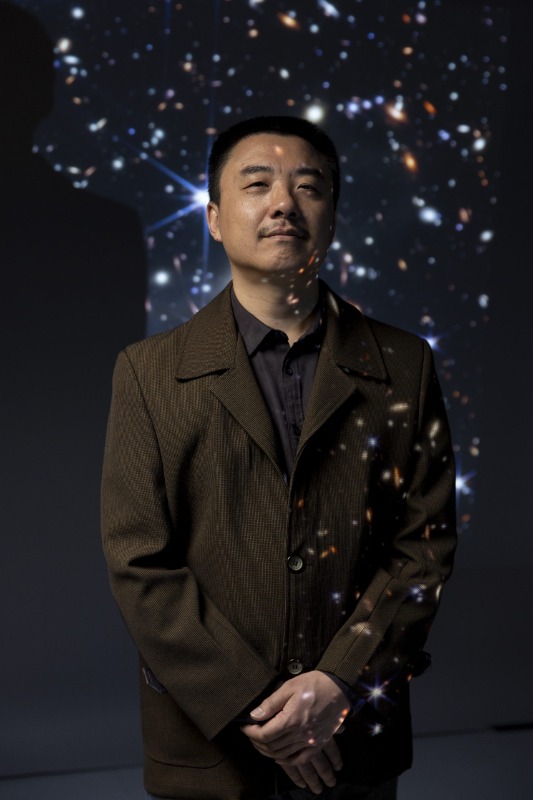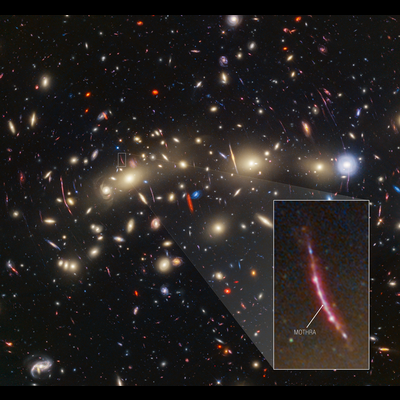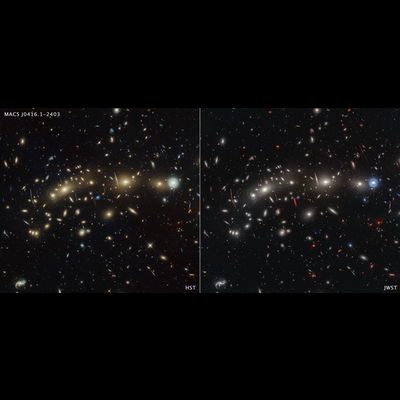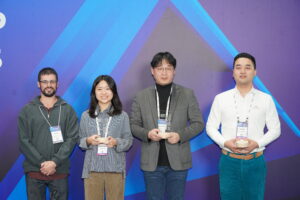
A team of international scientists, led by the University of Missouri’s Dr. Haojing Yan, used NASA’s James Webb Space Telescope (JWST) to uncover 14 new transient objects within the Christmas Tree Galaxy Cluster, 4.3 billion light years away. These transients, which appear as flickering lights in space, were recognized through a time-lapse study of galaxy cluster MACS0416. Two of the discovered transients are supernovae, allowing the team to explore their host galaxies. Innovation & Tech Today spoke with Dr. Haojing Yan about this groundbreaking discovery and how innovative tech redefines space exploration.
Innovation & Tech Today: How is the James Webb Space Telescope (JWST) different from other telescopes? How did the tech help you discover the transient objects in the Christmas Tree Galaxy Cluster?
Dr. Haojing Yan: To explain the technology part, it’s best to do a comparison to two of NASA’s other space telescopes, the Hubble Space Telescope (HST), which is still functioning, and the Spitzer Space Telescope (Spitzer), which ceased operation in 2020. HST works in the ultraviolet to near-infrared and is only 2.4-meter in diameter. Spitzer worked from near-infrared to far-infrared but is only 0.85-meter in diameter. JWST mostly works in near-infrared to mid-infrared and is 6.5-meter in diameter. JWST is much more sensitive and has much better spatial resolution than either of the other space telescopes mentioned because it has a much larger mirror. The unprecedented sensitivity and spatial resolution of JWST in infrared enabled our discovery.
I&T Today: What motivated your team to study the MACS0416 galaxy cluster, and why is it called the Christmas Tree Galaxy Cluster?

Yan: In the previous studies using the Hubble Space Telescope, astronomers found a few transients in this cluster. The conclusion was that these transients are individual stars in background galaxies (e.g., much more distant than the cluster itself). They were temporarily amplified a huge amount due to the gravitational lensing of the cluster so that they were visible to HST for a short duration of time (e.g., “transients”). Detecting an individual star in far-away galaxies is a big deal. Without gravitational lensing, we would never be able to achieve such a goal. Our team’s program, dubbed “Prime Extragalactic Areas for Reionization and Lensing Science” (PEARLS), led by PI Prof. Rogier Windhorst at Arizona State University, chose to tackle this challenge. We nicknamed MACS0416 as such because it is so colorful, and the transients are like the twinkling lights one would put on a Christmas tree.
I&T Today: How do transient objects such as supernovae help us understand the universe? What can we learn from studying them?
Yan: The 14 transients in our study fall into two different categories: 12 of them are temporary, extremely-highly-amplified stars in far-away galaxies, which are stars that are intact; the other two are supernovae (also located in distant galaxies), which are dead, exploding stars — hence increasing their brightness by more than a billion times. Simply put, studying the 12 stars can help us learn how the stellar constituents of far-away galaxies could be different from (or the same as) our galaxy and study the dark matter content of the lensing cluster (MACS0416) in a detailed way that was never achievable before. Studying the supernovae will help us test our cosmological model and understand the nature of dark energy. What we’ve been able to discover here is just the tip of the iceberg, and JWST has opened a whole new window of studying transients that will have a profound impact on scientific research.

I&T Today: What challenges or difficulties did your team encounter during the research?
Yan: The biggest challenge was to validate our findings and we did so by using extremely careful analysis. My graduate student, Bangzheng Sun, contributed a lot to this effort.
I&T Today: How might the current and future tech advancements in space telescopes impact future astronomical research and discoveries?
Yan: In my opinion, JWST is revolutionizing astronomy. It has given us so many surprises already.
I&T Today: Are there specific plans or hopes for utilizing the JWST in future research projects?
Yan: A lot of our team members have recently put in proposals for consideration that are aimed at studying different aspects of the universe using JWST.
I&T Today: Considering the evolving nature of space tech and astronomy, how do you see upcoming tech advancements influencing our understanding of the universe?
Yan: Looking at the development of observational astronomy from a different angle, we could also benefit enormously from a larger space telescope working at UV-to-visible wavelength.











